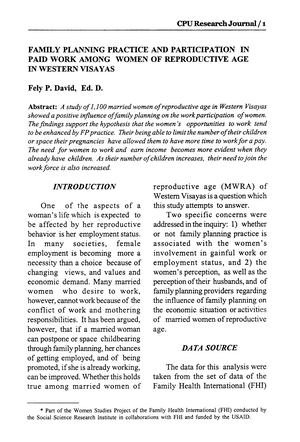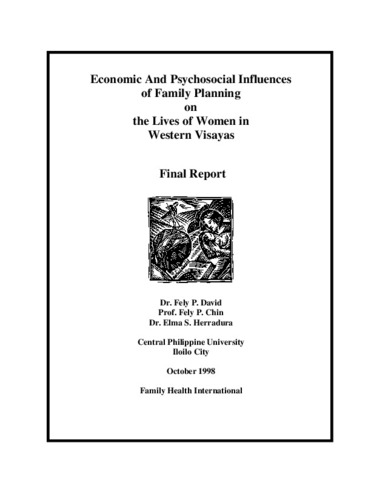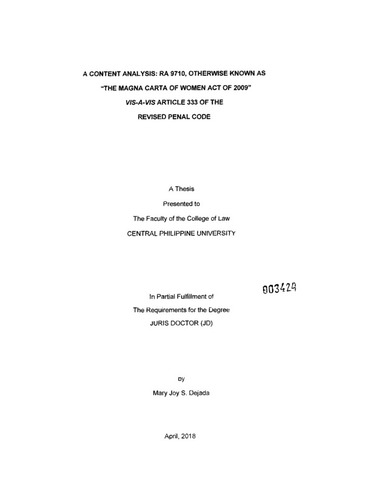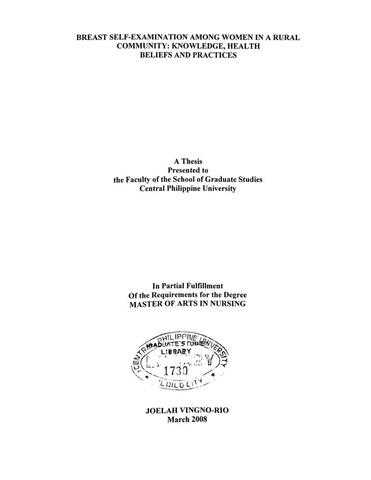Family planning practice and participation in paid work among women of reproductive age in Western Visayas
Abstract
A study of 1,100 married women of reproductive age in Western Visayas showed a positive influence of family planning on the work participation of women. The findings support the hypothesis that the women’s opportunities to work tend to be enhanced by FP practice. Their being able to limit the number of their children or space their pregnancies have allowed them to have more time to work for a pay. The need for women to work and earn income becomes more evident when they already have children. As their number of children increases, their need to join the work force is also increased.
Paglalarawan
Journal article
Mungkahing Sipi
David, F. P. (1999). Family planning practice and participation in paid work among women of reproductive age in Western Visayas.Uri
ArticleISSN
0038-3600Mga Paksa
Collections
- CPU Research Journal [15]
Mga parehong item
Ipinapakita ang mga item na nauugnay sa pamagat, may-akda, tagalikha at paksa.
-
Economic and psychosocial influences of family planning on the lives of women in Western Visayas: Final report
David, Fely P.; Chin, Fely P.; Herradura, Elma S. (Family Health International (FHI) and Central Philippine University, 1998-10)This study was conducted by the Social Science Research Institute (SSRI), Central Philippine University, in collaboration with the Women’s Resource Center (WRC), between 1995 and 1997 in order to determine the ... -
A content analysis: RA 9710, otherwise known as “The Magna Carta of Women Act of 2009” vis-à-vis Article 333 of the Revised Penal Code
Dejada, Mary Joy S. (2018)A content analysis was conducted to determine the effectiveness of RA 9710, otherwise known as “The Magna Carta of Women Act of 2009” in relation to Article 333 of the Revised Penal Code (RPC). This study sought to determine ... -
Breast self-examination among women in a rural community: Knowledge, health beliefs and practices
Rio, Joelah V. (2008)The objectives of this study were to determine the knowledge about breast cancer and BSE, how it varies in terms of women’s characteristics like age, educational attainment and civil status. To determine whether their ...





